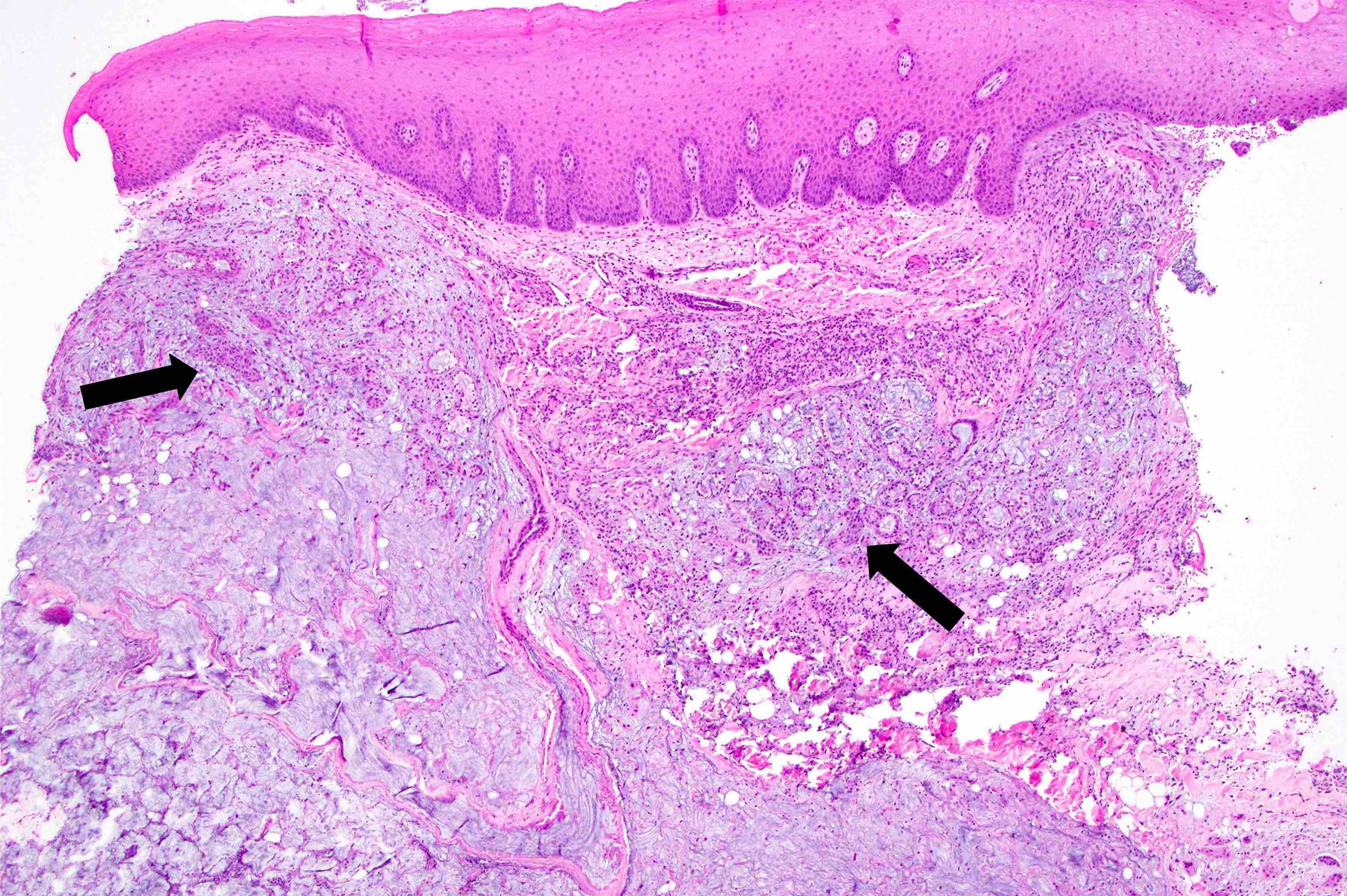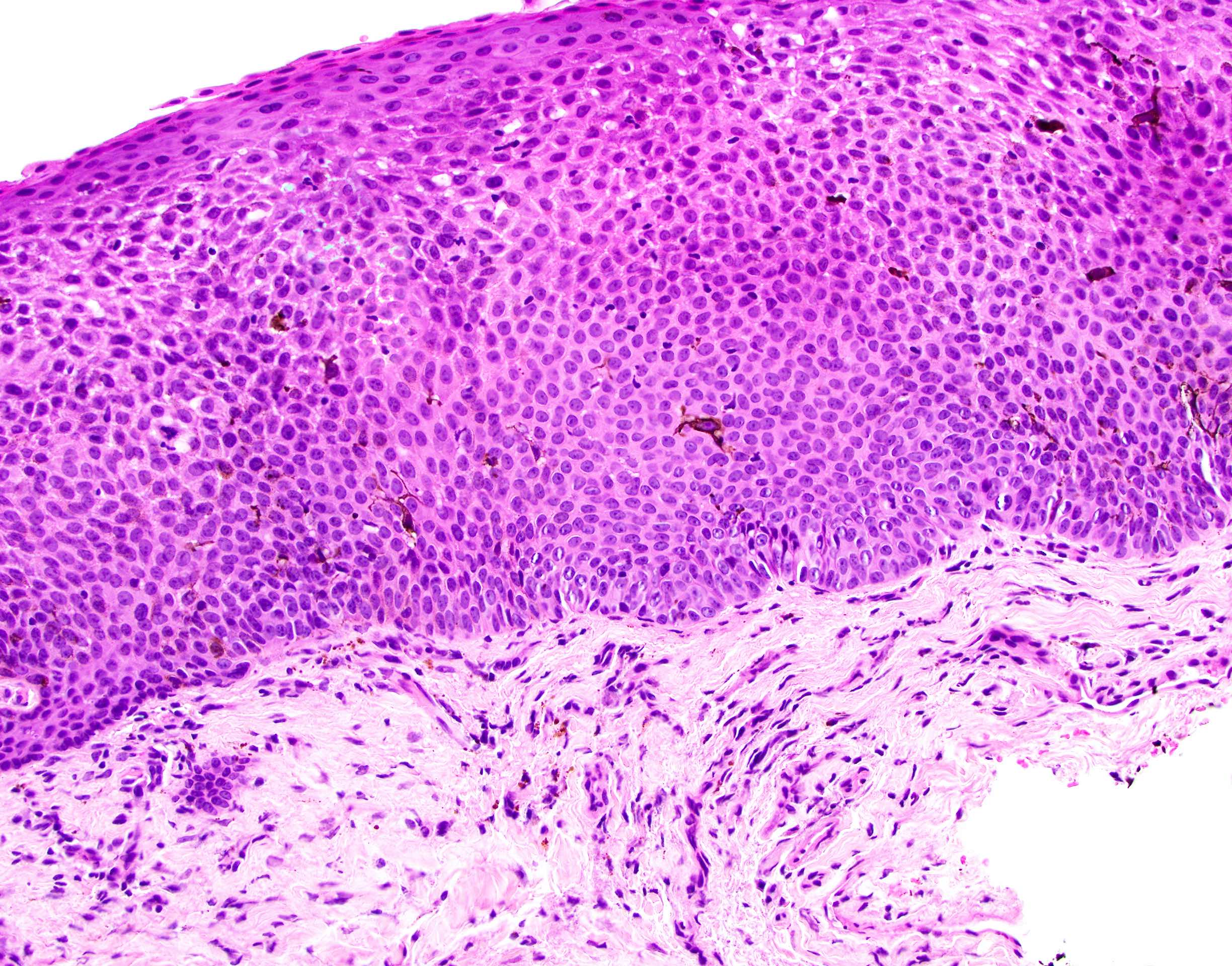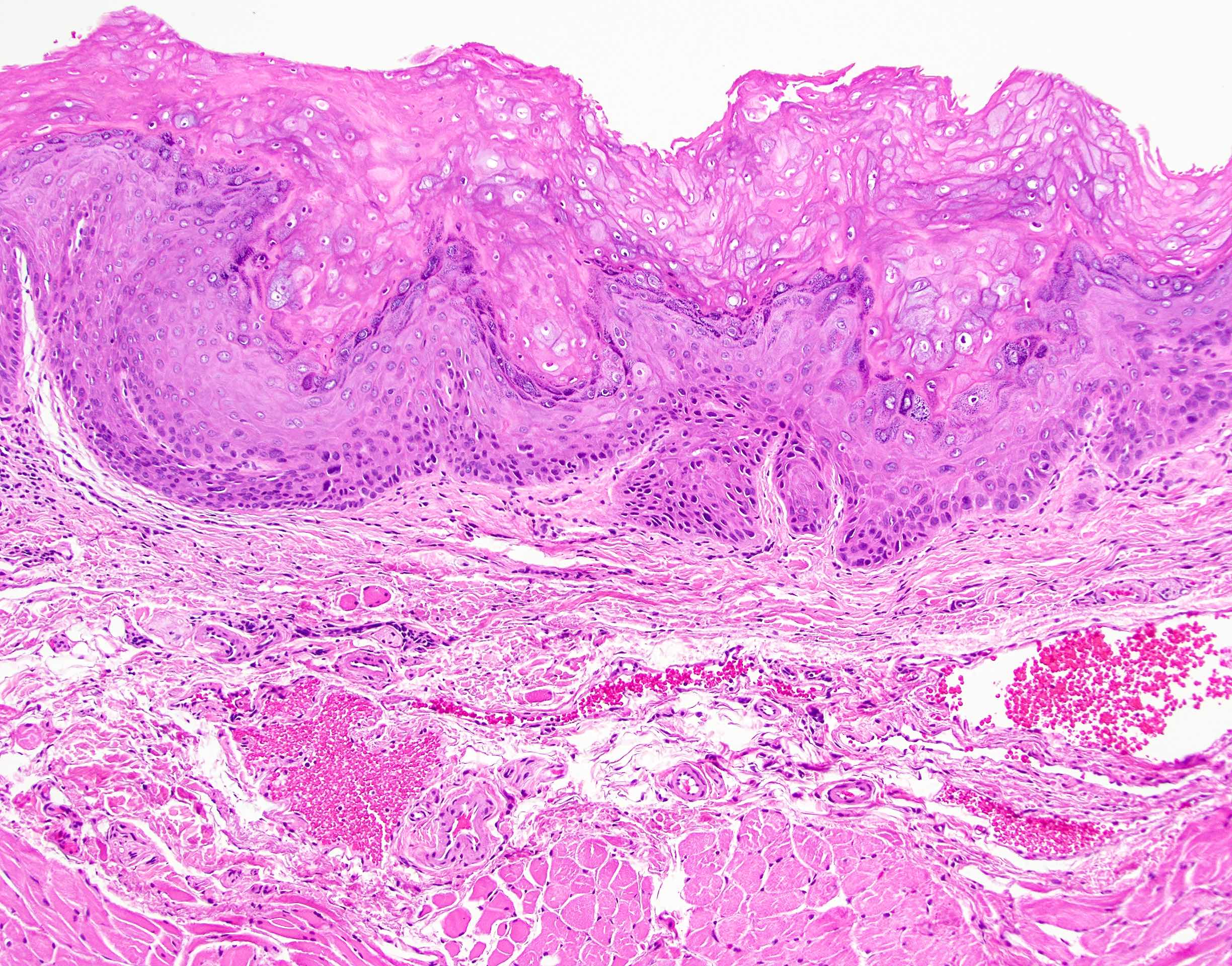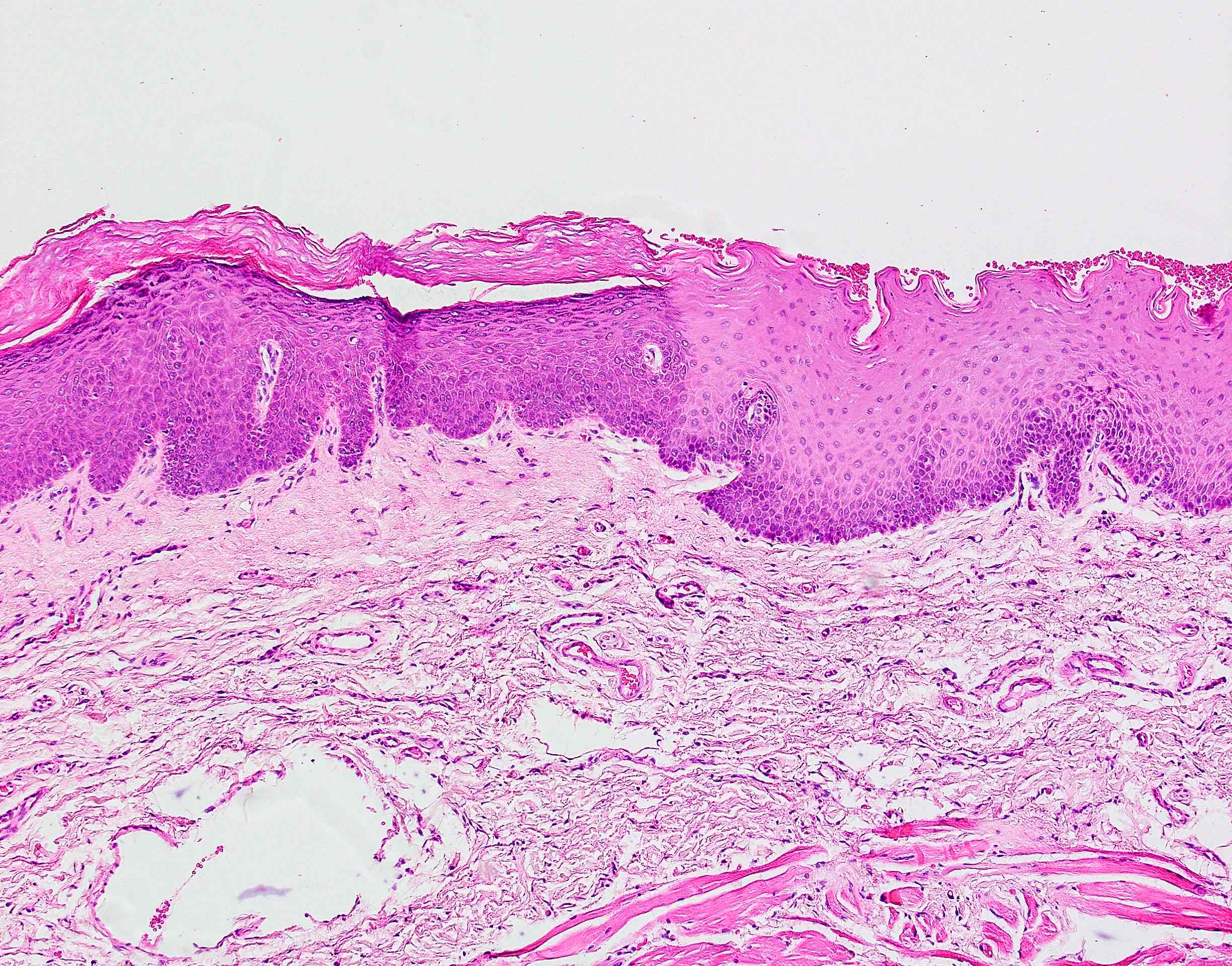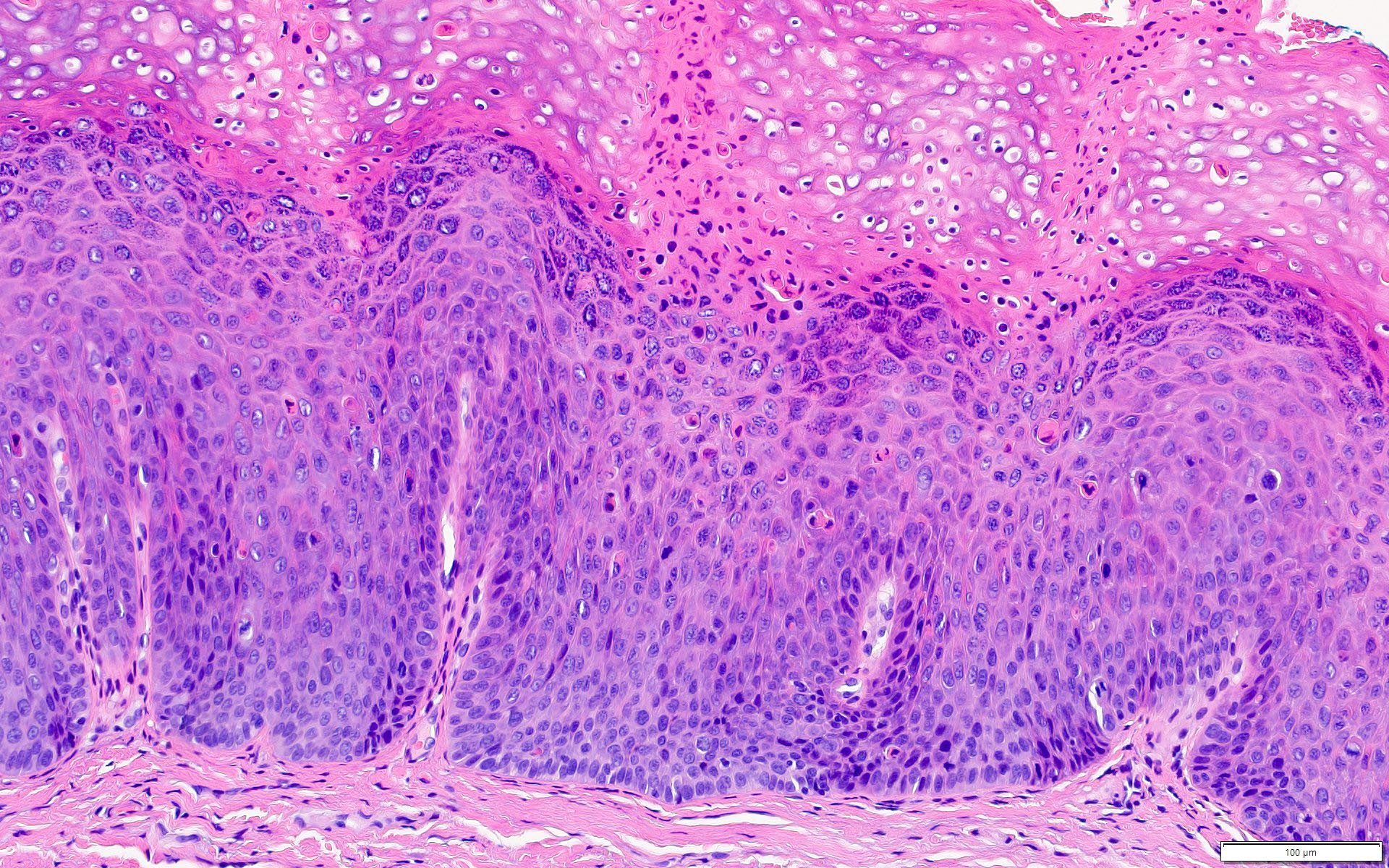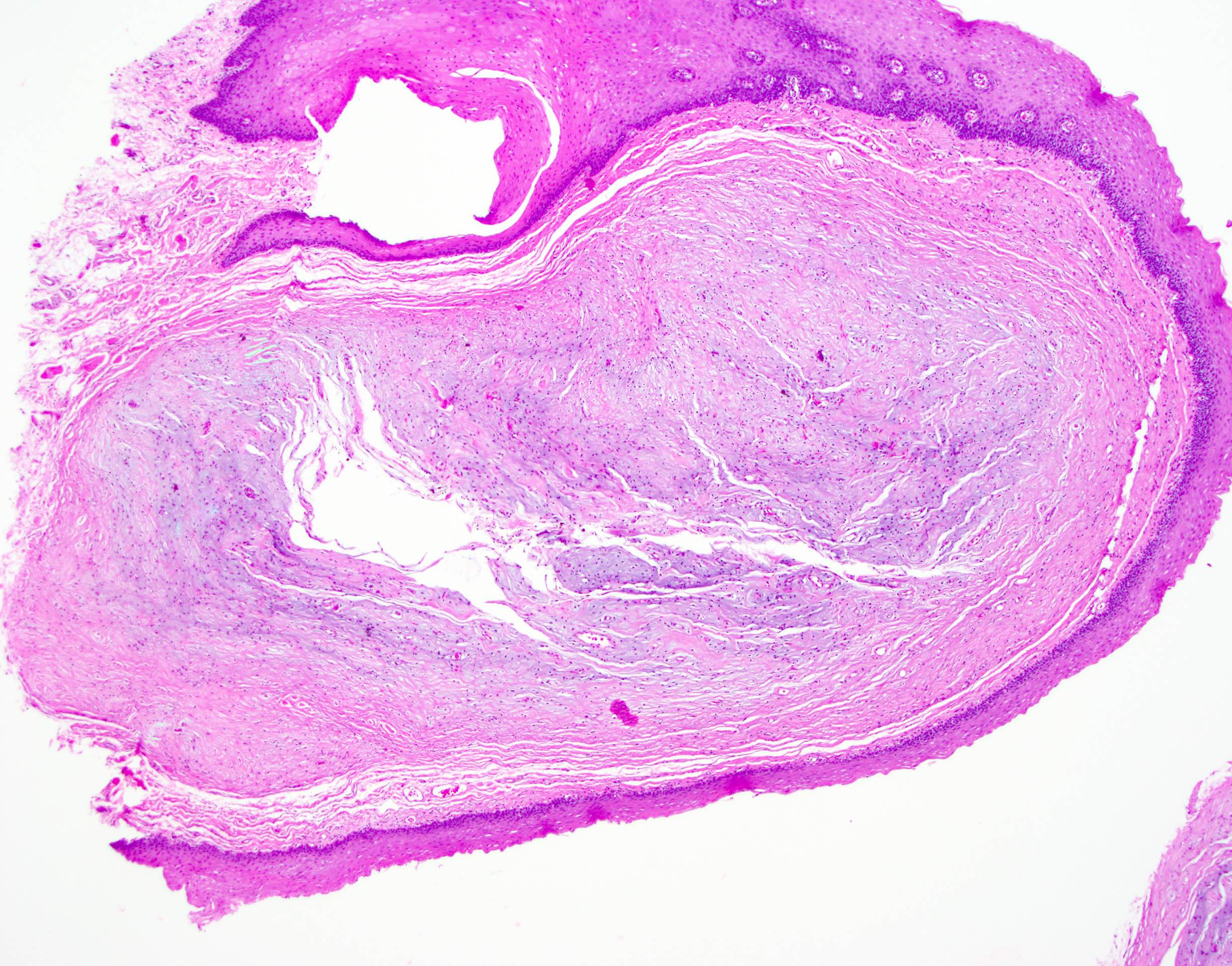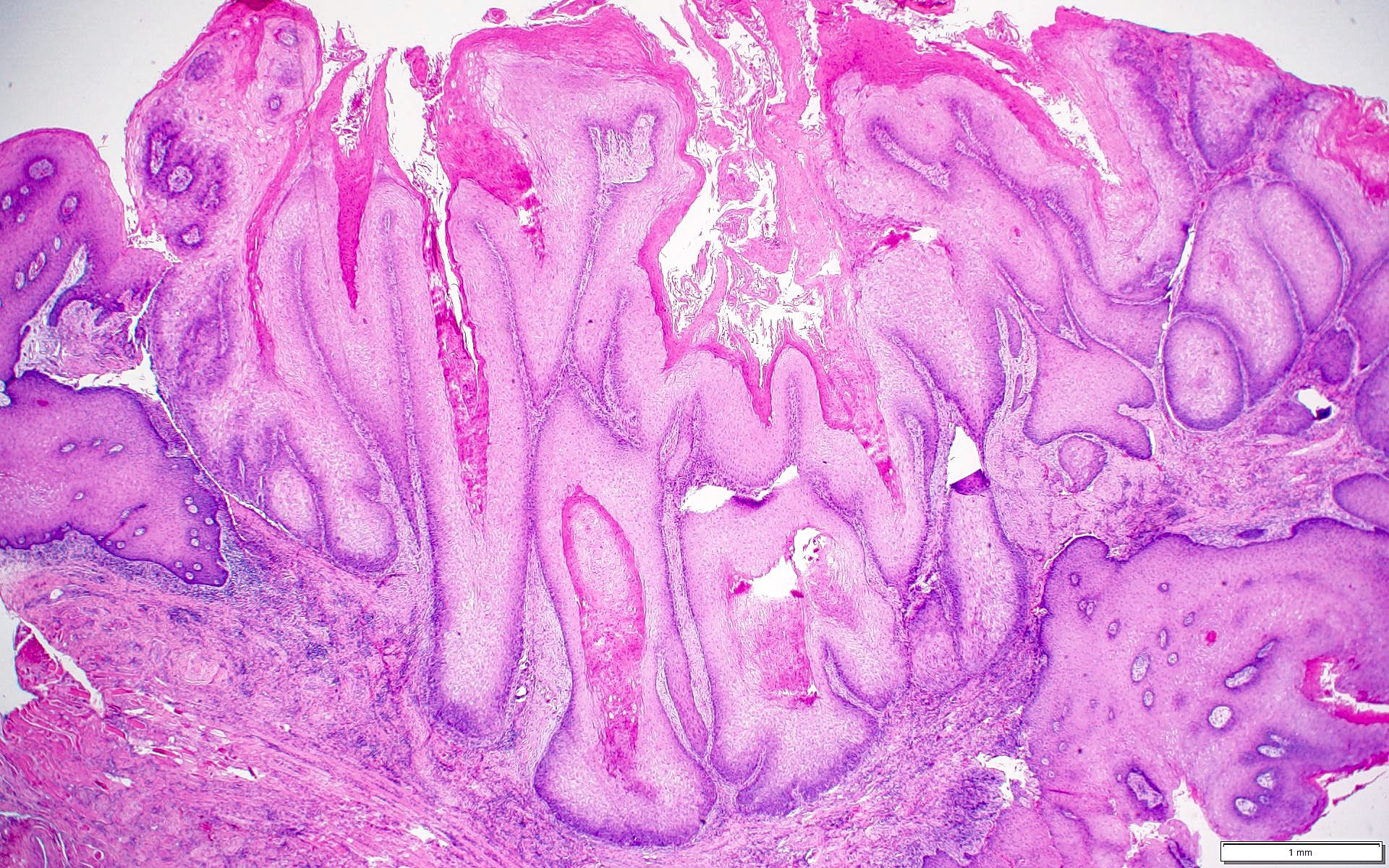Table of Contents
Definition / general | Major updates | WHO (2022) - oral cavity and mobile tongue tumors | WHO (2022) - oropharyngeal tumors (base of tongue, tonsils, adenoids) | Microscopic (histologic) images | Additional references | Board review style question #1 | Board review style answer #1Cite this page: Smith MH. WHO classification-oral cavity & oropharynx. PathologyOutlines.com website. https://www.pathologyoutlines.com/topic/oralcavityWHOoropharynx.html. Accessed April 3rd, 2025.
Definition / general
- WHO classification of tumors of the oral cavity and mobile tongue, as well as the oropharynx (base of tongue, tonsils, adenoids)
- Currently on 5th edition, published in 2022
Major updates
- Oral cavity and mobile tongue tumors
- Added a section on nonneoplastic lesions, including necrotizing sialometaplasia, multifocal epithelial hyperplasia and melanoacanthoma
- Epithelial tumors were reorganized with alterations and significant expansions made in diagnosis of oral potentially malignant disorders and oral epithelial dysplasia, namely adding the concept of architectural dysplasia and better defining features of proliferative verrucous leukoplakia (PVL)
- Human papillomavirus (HPV) associated dysplasia was added to the classification as a separate entity with discussion of incomplete data existing on p16 as an adequate surrogate marker for HPV infection in the oral cavity
- Carcinoma cuniculatum and verrucous carcinoma are now listed separately as subtypes of oral squamous cell carcinoma based on distinctive clinical presentation as well as histopathological appearances and behavior
- RREB1::MRTFB gene fusion was added to ectomesenchymal chondromyxoid tumor
- Sections on soft tissue and neural tumors, oral mucosal melanoma, salivary gland tumors and hematolymphoid tumors are removed from the oral cavity section and inserted into chapters dedicated to those tumor categories
- Oropharyngeal tumors (base of tongue, tonsils, adenoids)
- Draws the clear distinction of oropharyngeal squamous cell from squamous cell carcinoma of the oral cavity, larynx, nasopharynx and sinonasal tract, emphasizing the critical role of p16 / HPV testing in routine practice
- Section on tonsillar hamartomas has been added
- To reduce redundancy, sections on salivary gland, neuroendocrine tumors and lymphoid malignancies have been removed from this chapter and inserted into other chapters
- Reference: Head Neck Pathol 2022;16:54
WHO (2022) - oral cavity and mobile tongue tumors
| Nonneoplastic lesions | ICD-O | ICD-11 |
| DA04 | ||
| 1E82.0 | ||
| 2E90.3
| ||
| Epithelial tumors | ||
| ||
| 8052/0 | 2E90.3 & XH50T2 | |
| ||
| 8077/0, 8077/2 | ||
| DA01.00 | ||
| DA02.2 | ||
| ||
| 8071/3 | 2B6E.0 | |
| 8051/3 | 2B66.0 & XH5PM0 | |
| 8071/3 | 2B6E.0
| |
| Tumors of uncertain histogenesis | ||
| KC23 | ||
| 9580/0, 9580/3 | 2E90.1 | |
| 8982/0 | ||
| 9363/0 | 2D42 & XH6C72 |
WHO (2022) - oropharyngeal tumors (base of tongue, tonsils, adenoids)
| Benign oropharyngeal lesions | ICD-O | ICD-11 |
| DB35.3
| |
| Epithelial tumors | ||
| 8085/3 | 2B6A.0 & XH0EJ7 | |
| 8086/3 | 2B6A.0 & XA4J67 & XH4CR9 |
Microscopic (histologic) images
Contributed by Molly Housley Smith, D.M.D.
Squamous cell carcinoma of oral cavity
Additional references
Board review style question #1
Board review style answer #1
C. Oral melanocacanthoma is considered a nonneoplastic lesion according to WHO (2022). Answers B and D are incorrect because oral epithelial dysplasia and submucous fibrosis are considered to be epithelial tumors. Answer A is incorrect because congenital granular cell epulis is a tumor of uncertain histogenesis.
Comment Here
Reference: WHO classification-oral cavity & oropharynx
Comment Here
Reference: WHO classification-oral cavity & oropharynx




